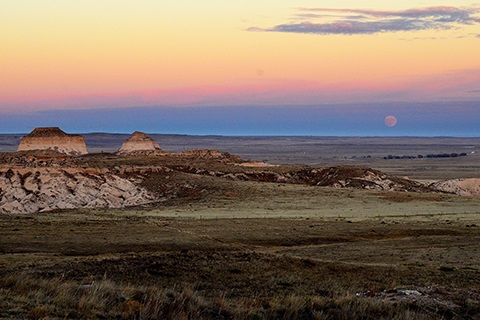Trick or Treat: What Will the Ozone Modeling Results Tell Us?
Published on October 27, 2025

After months of delays, the Regional Air Quality Council (RAQC) will present results from its ozone source-apportionment modeling on October 30. These results will help answer one big question: Where is our ozone coming from—and what can we do about it?
Why Ozone Matters
Ozone isn’t always the villain. High in the atmosphere, it shields us from the sun’s harmful ultraviolet rays. But closer to the ground, ozone becomes a pollutant that can irritate lungs, trigger asthma, and make it harder to breathe.
You can’t see or smell ozone, but you can feel it on high-ozone days—especially if you’re a child, older adult, or someone with heart or lung disease.
The Denver Metro/North Front Range (DMNFR) region continues to exceed the federal health-based ozone standard. Years of exceedances have placed our region in “serious nonattainment,” meaning we’re required to take additional steps to reduce ozone-forming emissions. Remember when reformulated gasoline became mandatory in 2024? That was a result of ongoing nonattainment.
How Source-Apportionment Helps
Unlike many pollutants, ozone isn’t emitted directly from a tailpipe or smokestack. It forms in the air when sunlight reacts with two key ingredients:
-
Nitrogen oxides (NOx): From burning fuel in engines, generators, or stoves using oil, wood, or natural gas or even wood from wildfires.
-
Volatile organic compounds (VOCs): From industry, vehicles, oil and gas, household products, and even natural vegetation.
These are known as ozone precursors. The chemistry is complex. Reducing one ingredient doesn’t always reduce ozone. In some cases, lowering NOx can actually increase ozone levels depending on local air chemistry.
That’s where source-apportionment modeling comes in. It identifies how much ozone comes from different sources, such as transportation, oil and gas, or other industrial activities, and helps determine which strategies would be most effective for reduction.
The modeling results expected on October 30 will guide local and regional agencies in targeting efforts that make the biggest difference for cleaner air.
What’s Next
The RAQC will present the modeling results at its Ozone Forum on October 30. Details are available on the Weld County Air website at air.weld.gov/Events-directory.
The discussion will be technical, but if you’d like help understanding the findings, Dr. Annareli Morales, Air Quality Policy Analyst for Weld County, will be attending and can answer follow-up questions at amorales@weld.gov.
Learn More
Want to better understand how ozone forms and why it’s such a challenge in Colorado? Visit air.weld.gov/Air-Quality-101 for a quick primer and additional resources.